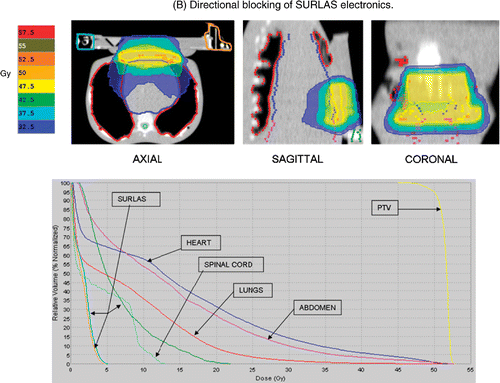Figures & data
Figure 1. Photograph of the SURLAS showing its long axis (red line along the scanning direction of the reflector) as well as some of its major components. The long axis is used as a reference on how the SURLAS is placed on the phantom with respect to the phantom's longitudinal axis.
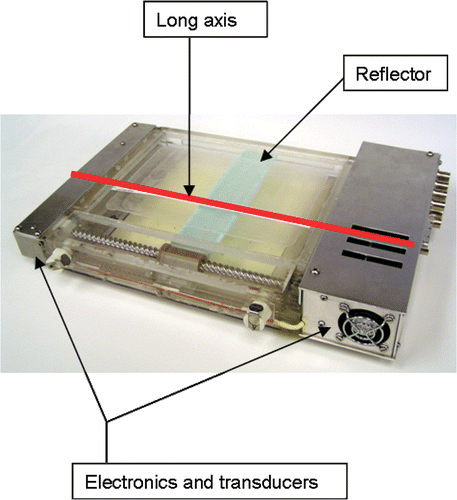
Figure 2. Kilovoltage and megavoltage CT images of the phantom with the SURLAS in place at approximately the same anatomical level. Please note the resolution of the MVCT image which has good soft tissue contrast as compared to the KVCT image. The KVCT image is degraded by artifacts specifically in regions near the high density materials of the SURLAS.
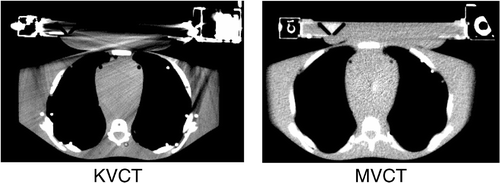
Figure 3. Megavoltage (MVCT) density table applied to each of the treatment plans. This table is specifically for the helical tomotherapy planning station.
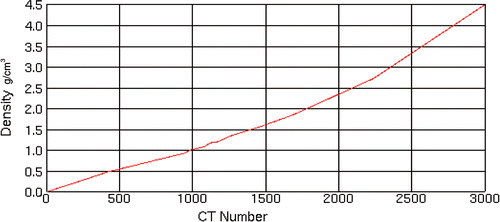
Figure 4. SURLAS positioned with its long axis parallel to the longitudinal axis of the RANDO phantom simulating treatment to the superficial PTV.
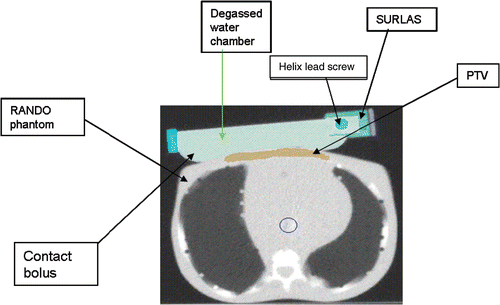
Figure 5. SURLAS positioned with its long axis perpendicular to the longitudinal axis of the RANDO phantom simulating treatment to the superficial PTV. Please note that a portion of the right sided SURLAS electronics is outside the field of view of the MVCT.
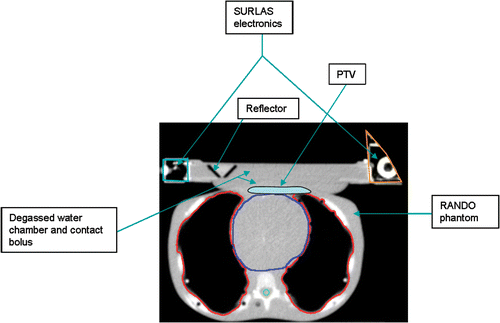
Figure 6. Typical isodose distribution (over 25 equal fractions) and dose-volume histogram for both deep (A) and superficial planning (B) target volume (PTV) with the SURLAS long axis parallel to the longitudinal axis of the RANDO phantom.
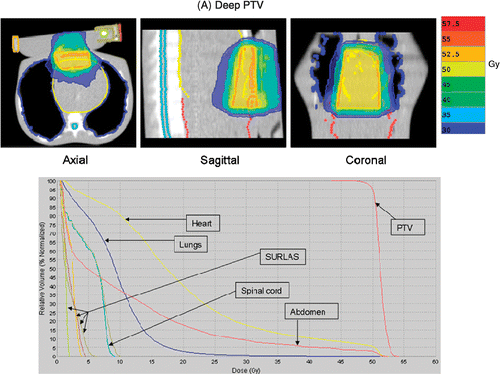
Table I. Average beam-on time (s) and coefficient of variation (%) of each planning target volume (PTV) for treatment plans where the long axis of the SURLAS is parallel to the longitudinal axis of the RANDO phantom.
Table II. Mean average dose (Gy) in 25 fractions to SURLAS high density components of each planning target volume (PTV) for treatment plans where the long axis of the SURLAS is parallel to the longitudinal axis of the RANDO phantom.
Figure 7. Mean of average dose (Gy) to organs at risk (maximum dose (Gy) to spinal Cord) in 25 equal fractions for treatment plans with the long axis of the SURLAS parallel to the longitudinal axis of the RANDO phantom. PTV, planning target volume.
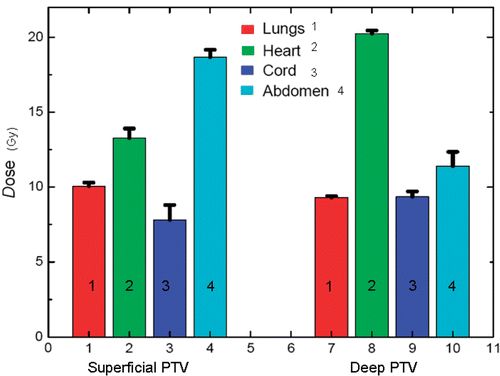
Figure 8. Isodose distribution (over 25 equal fractions) and dose-volume histogram for the superficial planning target volume (PTV) with the SURLAS long axis perpendicular to the longitudinal axis of the RANDO phantom. The SURLAS electronics were either directionally (A) or completely (B) blocked by the use of constraints.
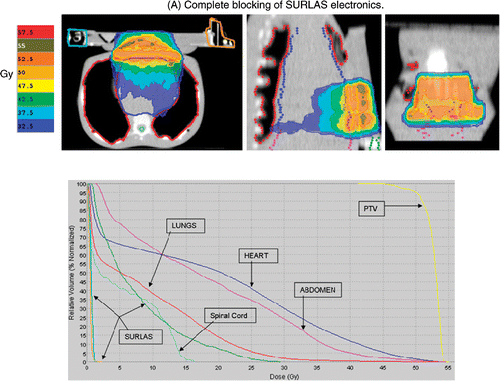
Table III. Beam-on time (s) and coefficient of variation (%) when blocking SURLAS electronics of the superficial planning target volume (PTV) for treatment plans where the long axis of the SURLAS is perpendicular to the longitudinal axis of the RANDO phantom.
Figure 9. Isodose distribution (over 25 equal fractions) and dose-volume histogram for the superficial planning target volume (PTV) without the SURLAS.
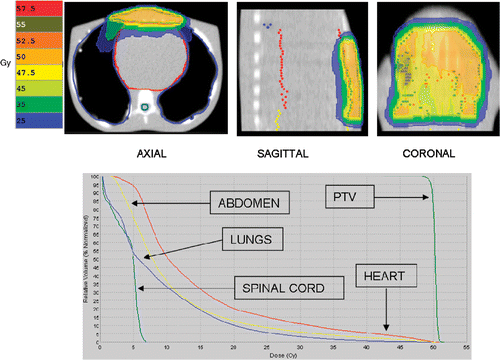
Table IV. Dosimetric parameter comparison between superficial PTV treatment plans.

